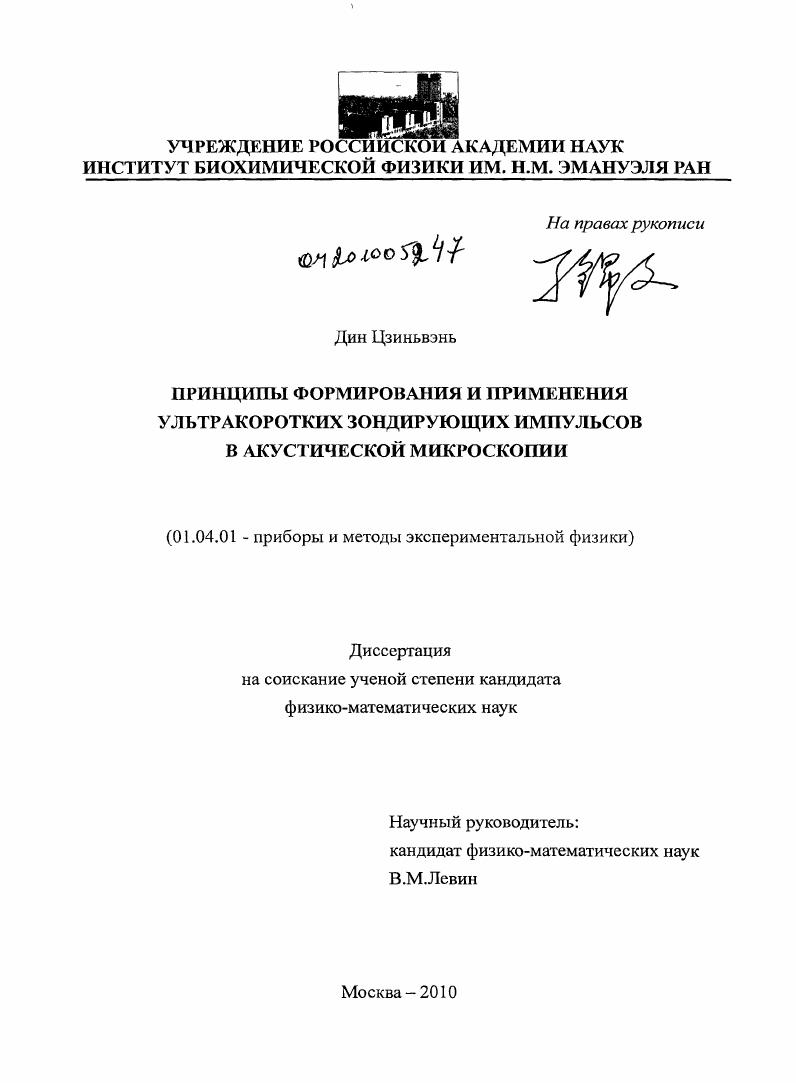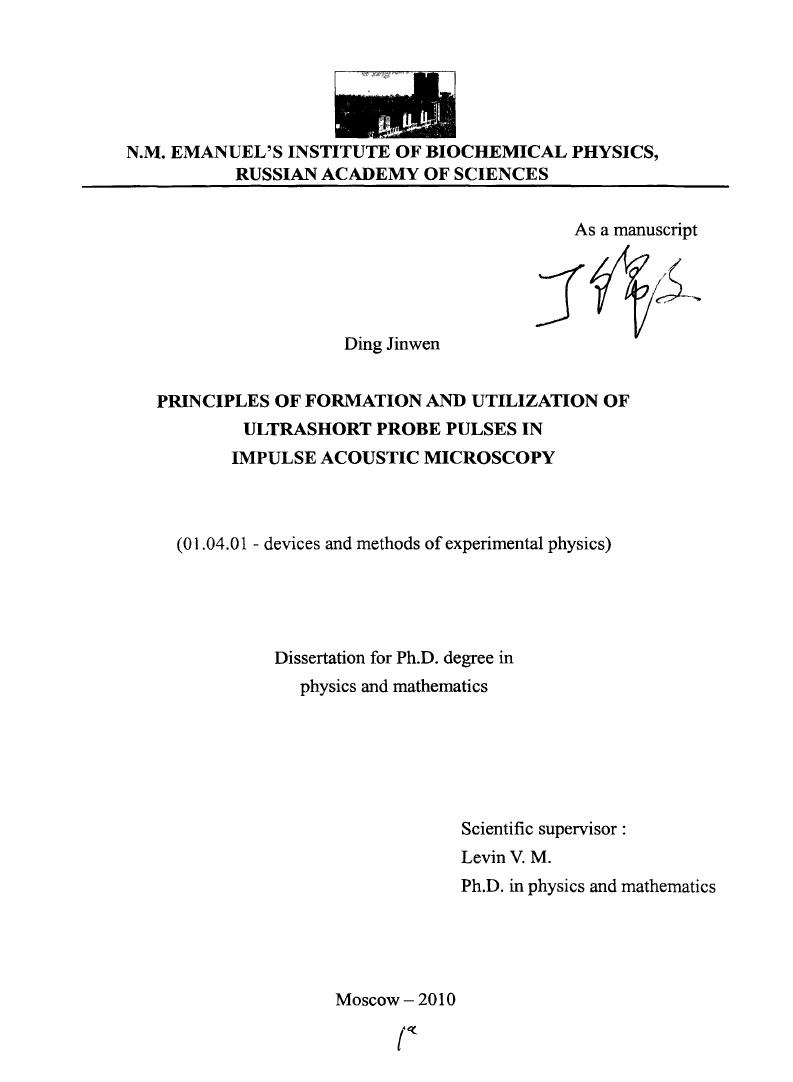Принципы формирования и применения ультракоротких зондирующих импульсов в акустической микроскопии

- Автор:
Дин Цзиньвэнь
- Шифр специальности:
01.04.01
- Научная степень:
Кандидатская
- Год защиты:
2010
- Место защиты:
Москва
- Количество страниц:
128 с. : ил.
Стоимость:
700 р.250 руб.
до окончания действия скидки
00
00
00
00
+
Наш сайт выгодно отличается тем что при покупке, кроме PDF версии Вы в подарок получаете работу преобразованную в WORD - документ и это предоставляет качественно другие возможности при работе с документом
Страницы оглавления работы


Рекомендуемые диссертации данного раздела
| Название работы | Автор | Дата защиты |
|---|---|---|
| Инструментальные наблюдения за полем волнения в Центральной части Каспийского моря с притопленных буйковых станций | Амбросимов, Сергей Альбертович | 2008 |
| Развитие интерференционных и поляризационных методов измерения физических параметров твердых тел | Волков, Петр Витальевич | 2008 |
| Исследование процессов формирования специфических нитевидных кристаллов, предназначенных для микроэлектроники и приборостроения | Грызунова, Наталья Николаевна | 2008 |